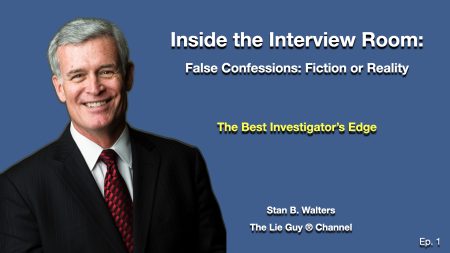Interview and Interrogation Techniques Tip 5
The Myth About Eye Contact and Eye Movement as Deception
101 Tips for Interviewers and Interrogators
Without prompting and a little critical thinking it becomes very obvious why “eye contact” and lateral eye movement have gained such undeserved credibility. First, it makes lie spotting seem so easy “even a cave man can do it.” Second, it fulfils the need to find a way to confirm our “suspicions” that someone is lying and gives us a fool-proof way to supposedly to spot deception every time. Third, it is easy for lazy way for people who teach interview and interrogation to proffer their expertise and bolster their ego’s as “master lie catchers” without having done any requisite research to support the curriculum they teach.
More Video at Stan’s YouTube Channel – 101 Tips for Interviewing and Interrogation
The Truth About Body Language and Deception: See Stan’s OnLine Course
Interviewing and Interrogation Training Courses – Find a course near you!
Free eBook for you! Practical Kinesic Interviewing and Interrogation: A Basic Guide
